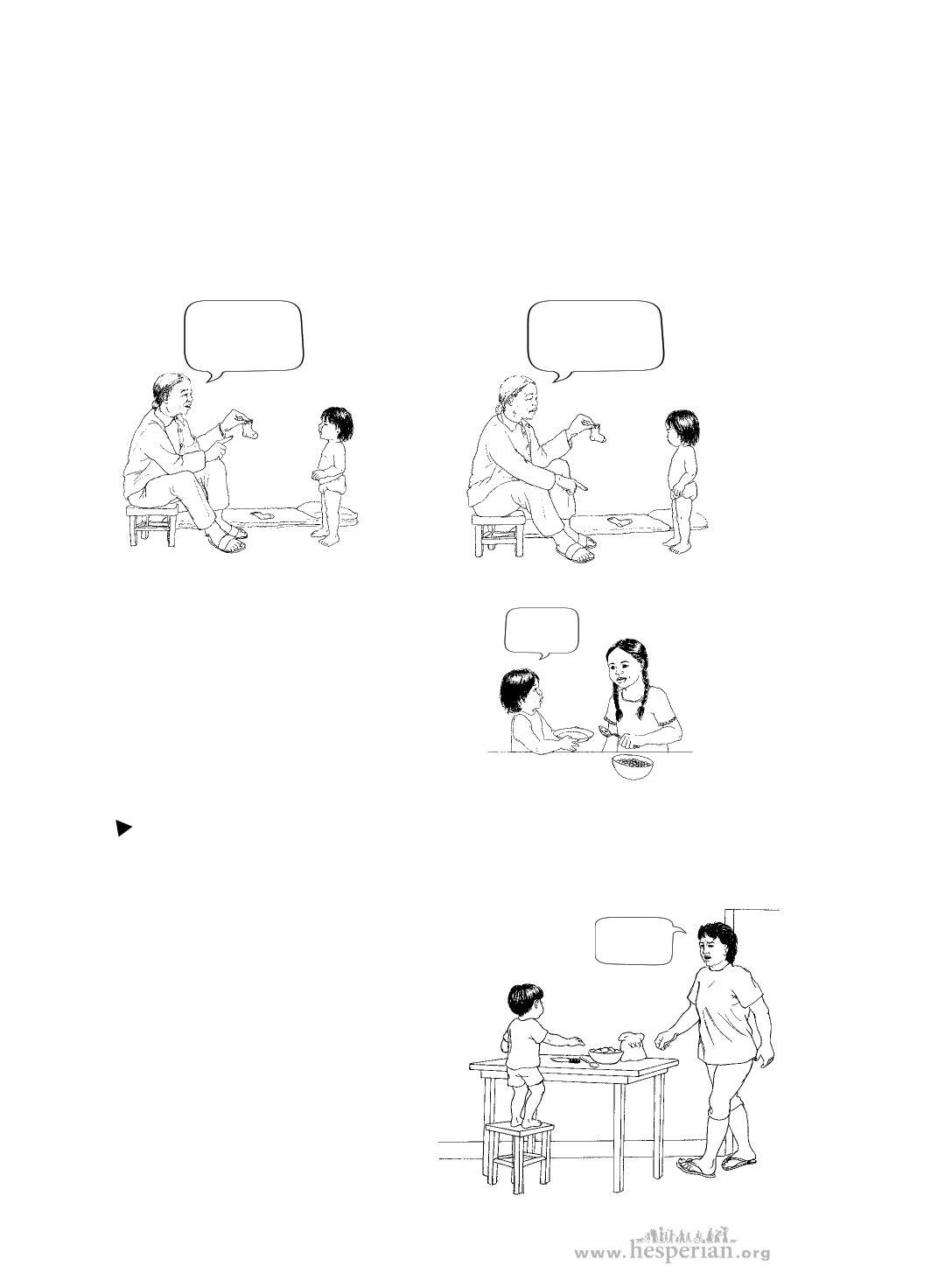
112 learning to use a spoken language
If your child answers, praise him. If your child does not answer:
• he may not understand the words you are using.
• he may not understand that a question needs an answer.
You can teach your child about questions by answering them for her at
first. After a while she will get the idea.
Where is
your other
sock?
On the bed.
The sock is on
the bed.
• Create situations that need your
child to ask for something. Here,
Ana’s sister gave her an empty
bowl and waited for her to ask for
beans.
Beans?
Help your child pay attention to how words are said
Whenever people speak, they tend to stress some words more than others
(loudness), to speak some words more quickly
than others (rhythm), and to change how
high or deep their voices are (pitch).
People also show what they are feeling by
No,
Manuel!
their tone of voice. These different ways
of speaking all add meaning to the
message being sent.
Listening to the tone in
his mother’s voice and
her stress on the word
‘no’ helps Manuel know
what she means.
Helping Children Who Are Deaf (2004)